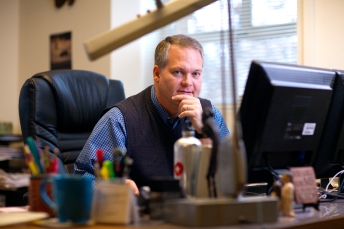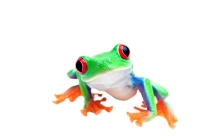COVER STORY
Q&A: Reports from the front line of ideas for a sustainable planet
Cornell researchers are developing viable renewable energy sources. What looks most promising to you? (continued)
Modern wind turbines are the largest of man-made moving objects, with spans greater than that of a Boeing 747. They also work under the most inhospitable conditions: rain, snow and ice, and above all, a highly intermittent wind field that gusts in a random way. One of the cutting-edge problems we are focusing on is the rare, high amplitude wind events that can sometimes cause a turbine's drive train to fail due to the resulting high stresses. Wind tunnel tests show that when there is wind shear and multi-scale turbulence, then rare gusts, like mini tornadoes, may occur with frequencies 1,000 times or more than would be expected using simple models. By understanding these wind events we can influence wind-turbine and wind-farm design to better withstand them.
– Zellman Warhaft, professor, mechanical and aerospace engineering.
Our work with algae is a good example. Cornell researchers from myriad departments are engaged in a range of activities: crop selection and breeding, bioprocesses, bioseparations, bioproducts and, most important, lifecycle analysis of the potential negative impacts of extensive scale-up in biofuel feedstock operations. Through an Atkinson Center grant, our research team has been exploring algal biotechnology in order to improve the viability of large-scale algal biofuels cultivation. We also have a Department of Energy-funded collaboration with Hawaii-based Cellana Inc. – one of the few existing pilot-scale production facilities for lipid-accumulating algae.
– Ruth Richardson, associate professor, civil and environmental engineering
Our recent research marks important and potentially transformative steps toward realizing the technological potential of nanomaterials in future solar cells. We have created novel nanocrystal quantum dot tandem solar cells that efficiently harvest solar energy in thin film devices processed from solution. This achievement marks the convergence of two important solar cell concepts: low-cost processing and engineering to efficiently absorb and convert the broad spectrum of solar energy. Essentially, this is a way to harvest more of the sun's power for less cost.
– Tobias Hanrath, assistant professor, chemical and biomolecular engineering
What outside the box innovations are emerging from Cornell's sustainability research?
We are working with The Conservation Fund on ways to help the red-cockaded woodpecker in North Carolina using computational sustainability to model complex conservation issues. Ecologists have long studied migration patterns for this endangered species, and so we incorporated their descriptive models into a larger context to illuminate which tracts of forestland should be kept as reserves over an 80-year time horizon to improve the woodpecker's chance of survival. Our computational models are similar to the "planning under uncertainty" process that companies like Amazon.com use to manage inventory. The next step is to look at the feasibility of moving some birds to new, artificial nests and whether that will help in the long run.
– David Shmoys, professor, operations research and information engineering
The increasing carbon dioxide (CO2) concentration in the atmosphere is a big concern, and we need engineering solutions to essentially put the CO2 back in the box. Scientists everywhere are exploring ways to tie up the atmospheric CO2 so that it won't contribute to greenhouse gas warming. One alternative is to pump the CO2 deep underground and trap it in the pore spaces of rocks. We looked into the feasibility of storing CO2 at greater than 3,000 feet below central New York, but we discovered that other regions of the U.S. have much better storage potential.
– Teresa Jordan, professor, earth and atmospheric sciences

Chris Barrett has said: "I'm interested in improving the well-being of the poorest members of humankind and doing what we can in practical terms to help them help themselves." See larger image
Droughts routinely spark humanitarian crises in the dry lands of East Africa, as they have this year. Insurance to cover catastrophic livestock loss wasn't available until we figured out a way to use satellite-based measurement of rangeland vegetation to predict losses and underwrite novel index-based livestock insurance contracts in Kenya. To tailor the insurance to alleviate poverty and support development in fragile rangeland ecosystems, we first put global positioning system collars on the herds, enabling us to track any changes in herd patterns or ecological conditions.
– Chris Barrett, the Stephen B. & Janice G. Ashley Professor of Applied Economics and Management, Dyson School, and associate director for economic development, Atkinson Center
<<View entire story as one page>>

